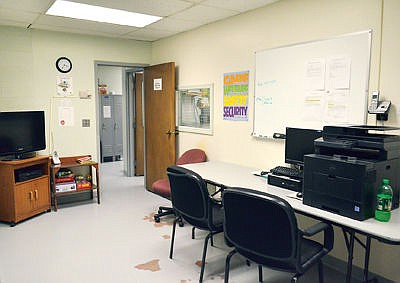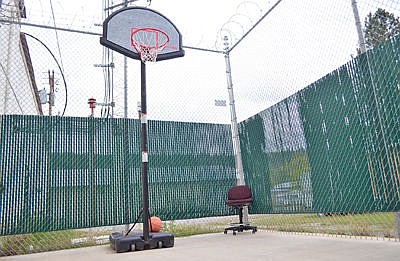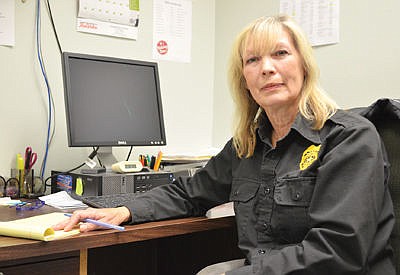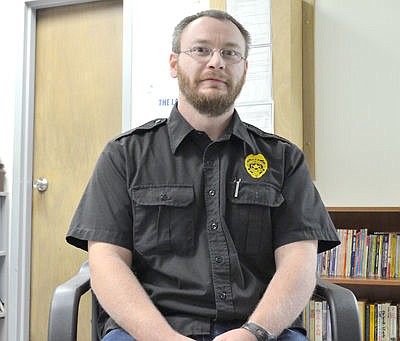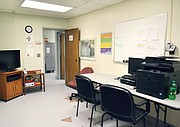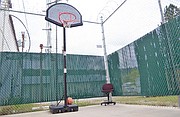County hopes to market its juvenile facility
Tucked in the Kootenai Valley of northwest Montana stands the Troy juvenile detention facility, one of just four juvenile facilities in the state. The facility can hold up to eight offenders at a time and isn’t often full.
For such a vast state, Montana only has juvenile detention facilities in Troy, Missoula, Great Falls and Billings. Earlier this month, the county began exploring options on how this unique asset could help find some new revenue for Lincoln County, which has been aching falling income sources.
At the Sept. 7 Lincoln County commissioners meeting, the sheriff’s officers approached the commissioners with a proposal: to take over the Troy juvenile detention facility that is currently under the commissioners’ direction, hire a larger staff and turn the facility into a potential revenue stream by attracting inmates from nearby counties.
Undersheriff Brandon Huff said the county is currently only exploring the option and still has to examine the facility’s financial structure to decide whether or not the sheriff’s office could take it into its own department.
“You’re basically starting a business, so it’s like you’re doing a marketing study,” Huff said. “Because of how it’s staffed and how it’s operated, other counties would be limited in what types of kids they’d be able to send over here. We need to first remedy that so we’re a facility open when Flathead (County) says, ‘Hey we want to reserve three beds,’ so they don’t have to figure out the logistics of sending over only one type of offender.”
According to Lincoln County Clerk and Recorder Robin Benson, the facility has had trouble spending the amount budgeted by the county in recent years. Last year, the juvenile detention department was budgeted $150,748, but spent $200,898. In the previous year, the department was about $40,000 over budget.
Staffing the facility presents its own financial complexities. Ran entirely by nine part-time employees, the facility’s influx of kids generally requires several employees to work into overtime, which is sometimes the biggest expense for the department.
“They struggle (to come in at budget),” Benson said. “How much they spend in wages really fluctuates. It’s one of those departments that’s hard to budget.”
The juvenile facility currently charges other counties $225 per juvenile per day, while the county covers the cost of in-county juveniles. Other counties, including neighboring Flathead County, occasionally send kids to Troy, although recently due to overcrowding issues in Flathead, the county made an agreement to send most of their kids to a facility in Missoula County, which has a better-staffed facility. Huff said other counties have expressed interest in sending kids to Troy, but with a small staff at the Lincoln County facility, those counties have become more comfortable sending violent offenders to Missoula or Great Falls.
Huff said the sheriff’s office needs to find out what the operating costs are and what the facility charges to handle juvenile offenders. With all this information, the sheriff’s office would look at building a marketing scheme to present to other counties that may be interested in sending kids to Troy, rather than Missoula or Great Falls.
For now, Huff underscored that this is only an option the sheriff’s office is exploring and has not yet made an active effort to execute the option.
Pam Norman, the director of the Troy juvenile detention facility, said while the facility itself is in compliance with state code and in good shape, what the facility needs is to become a better option for neighboring counties would be a bigger staff.
“We’ve got a lot of officers, they’re just classified as part time,” she said. “Half of our officers have other jobs so they’re only available certain days of the week. That kind of has been an issue.”
Norman said if the facility is holding male and female inmates, then the facility needs a male and female on staff during that time. A 24-hour period requires about six officers of the facility’s nine officers, so hiring more people on would help spread the workload. That’s led to some of the staff quitting for different work, while others on the staff carry on through long hours.
At the Troy juvenile detention center, inside the city building, the facility looks just like an adult probation center but, as one would expect, smaller.
The floors in the 20-year-old facility are gray cement and the walls are white cinder block. The intake area has to be opened with a key. There’s a speaker system outside the door for visitors to announce their arrival. Once escorted inside, the juveniles hand their things over to the staff to be logged and kept in a bin in the intake room. Any contraband is sent back to youth court, where they might become evidence to the case, or the basis for further charges.
Past the intake room is the day room, a relief space from the jail cells down the hall. There are shelves with books and puzzles, a desktop computer with games at a desk and TV in the corner.
Detention officer Michael Derry said most adult facilities also have space for inmates to decompress or hang out. The one real difference he points out is the half-court basketball area outside, through a back door in the laundry room. Tall fences surround the concrete square, possibly to keep the ball from bouncing outside the facility, but there’s also razor wire spiraling around the top just in case.
“It helps quite a bit getting the kids outside,” Derry said.
After the outdoor court, the similarities between the adult and juvenile facilities become more closely aligned. There are eight beds among three cells: two two-bed cells and one four-bed cell. Cell one contains exactly two bunks, a sink and a privacy wall between the toilet and the camera in the corner above the doorway. Green bedding sits rolled up on the bunks. The walls are made up of blocks painted white and the floor is dark gray cement. Cell three has four bunks and is about twice as large as cell one.
Norman said she’s in contact with other facilities around the state. The jail uniforms and cameras came from the Great Falls facility. A few times a year, the state youth compliance auditor from the Department of Corrections checks up on the facility to make sure everything is up to code.
In their Sept. 7 meeting with the commissioners, Huff and Lincoln County Sheriff Roby Bowe said the sheriff’s department would look to hire about eight more staffers for the Troy facility. The initial costs will outweigh the current income; the facility could be turning a profit within the next two years of direction under the sheriff’s office if marketed correctly.
“Right now the Troy Juvenile facility costs the county money to operate. It has the potential to at least break even if not be a source of revenue. We need to take the time to explore that either way, and we start with the financials,” Huff said.


